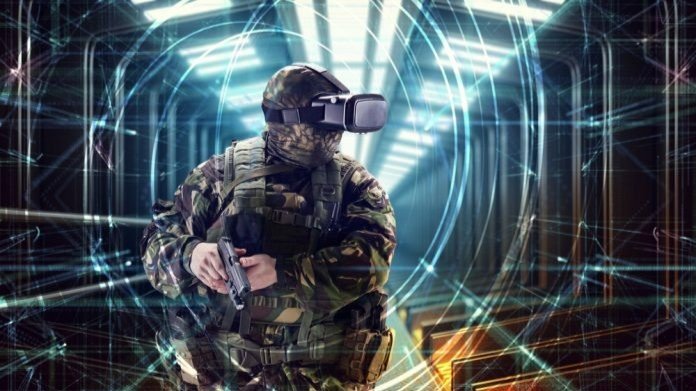Training and simulation services are essential to modern military operations, providing realistic, safe, and cost-effective environments for developing skills, testing strategies, and preparing personnel for complex scenarios. These services help enhance operational readiness, reduce risks, and ensure that military forces can perform effectively in dynamic and high-stakes environments. Here’s an in-depth look at their role:
1. Enhancing Operational Readiness
A. Realistic Training Scenarios
- Role: Simulate real-world combat conditions to prepare personnel for diverse operational challenges.
- How It Works:
- Virtual and augmented reality (VR/AR) environments replicate battlefields, urban combat zones, or maritime theaters.
- Simulated threats include enemy tactics, weather conditions, and terrain challenges.
- Example:
- Flight simulators for fighter pilots, such as the F-35 Full Mission Simulator, recreate aerial combat and advanced maneuvers.
B. Multi-Domain Training
- Role: Prepare forces for operations across land, air, sea, cyber, and space domains.
- How It Works:
- Integrated simulation platforms enable joint training exercises involving multiple services.
- Example:
- Live, Virtual, and Constructive (LVC) training combines live troops, simulated elements, and AI-driven adversaries.
2. Reducing Training Risks
A. Safe Environment for High-Risk Scenarios
- Role: Allow personnel to practice dangerous or complex tasks without real-world consequences.
- How It Works:
- Simulations of missile launches, shipboard firefighting, or nuclear incident responses.
- Example:
- Naval damage control simulators replicate shipboard emergencies, such as fires or flooding.
B. Controlled Failures
- Role: Enable personnel to learn from mistakes in a risk-free setting.
- How It Works:
- After-action reviews (AARs) analyze performance and provide constructive feedback.
- Example:
- Infantry combat simulators allow soldiers to refine tactics without real-world casualties.
3. Cost Efficiency
A. Reducing Resource Use
- Role: Minimize the need for live ammunition, fuel, and operational assets during training.
- How It Works:
- Simulated environments replicate the use of equipment and weaponry without incurring wear and tear.
- Example:
- Tank simulators save on fuel and ammunition costs while providing immersive training for armored vehicle crews.
B. Extending Equipment Lifespan
- Role: Reduce the wear on expensive military assets.
- How It Works:
- Simulators replicate the operation of aircraft, ships, and vehicles without physical strain on real systems.
- Example:
- Flight simulators for large transport aircraft like the C-17 Globemaster III reduce operational costs.
4. Accelerating Learning Curves
A. Repetitive Training
- Role: Allow personnel to practice specific tasks repeatedly to build proficiency.
- How It Works:
- Virtual environments enable continuous practice, such as navigation exercises or weapon handling.
- Example:
- Drone operators use simulators to refine skills in surveillance, target acquisition, and strike missions.
B. Adaptive Learning
- Role: Tailor training to individual or team skill levels and learning speeds.
- How It Works:
- AI-driven simulations adjust difficulty based on performance, providing customized challenges.
- Example:
- Cybersecurity training platforms adapt scenarios to test an operator’s ability to counter evolving threats.
5. Supporting Joint and Coalition Training
A. Interoperability
- Role: Enable forces from different branches or nations to train together seamlessly.
- How It Works:
- Shared simulation platforms allow coordinated training exercises across geographies.
- Example:
- NATO’s Joint Warfare Centre uses simulations to prepare multinational forces for coalition operations.
B. Language and Cultural Training
- Role: Enhance communication and collaboration in joint missions.
- How It Works:
- Immersive simulations provide language practice and cultural context for multinational operations.
- Example:
- Language training simulators prepare forces for deployment in specific regions.
6. Cyber and Electronic Warfare Training
A. Cyber Defense Simulations
- Role: Train personnel to identify, respond to, and neutralize cyber threats.
- How It Works:
- Simulated cyberattacks test network security and operator skills.
- Example:
- Cyber Range Environments replicate real-world IT systems for defensive and offensive cyber training.
B. Electronic Warfare (EW) Simulations
- Role: Train operators to detect and counter electromagnetic threats.
- How It Works:
- Simulations replicate radar jamming, signal interception, and electronic countermeasures.
- Example:
- EW simulators for naval and air defense systems help crews refine responses to adversary tactics.
7. Testing and Evaluating Strategies
A. Wargaming
- Role: Evaluate tactics, strategies, and decision-making in a simulated conflict environment.
- How It Works:
- AI-driven adversaries and scenarios test the effectiveness of plans and predict outcomes.
- Example:
- Strategic wargames help naval commanders assess fleet movements and resource allocation.
B. Experimentation with New Systems
- Role: Test and refine new technologies and doctrines before deployment.
- How It Works:
- Simulated environments evaluate the performance of new platforms or weapons.
- Example:
- Testing unmanned surface and underwater vehicles in virtual maritime environments.
Challenges in Training and Simulation
A. High Initial Costs
- Advanced simulators and virtual environments require significant investment.
B. Keeping Simulations Current
- Simulators must adapt to evolving threats and incorporate the latest technologies.
C. Balancing Real and Simulated Training
- Simulation cannot fully replicate the unpredictability of live training.













